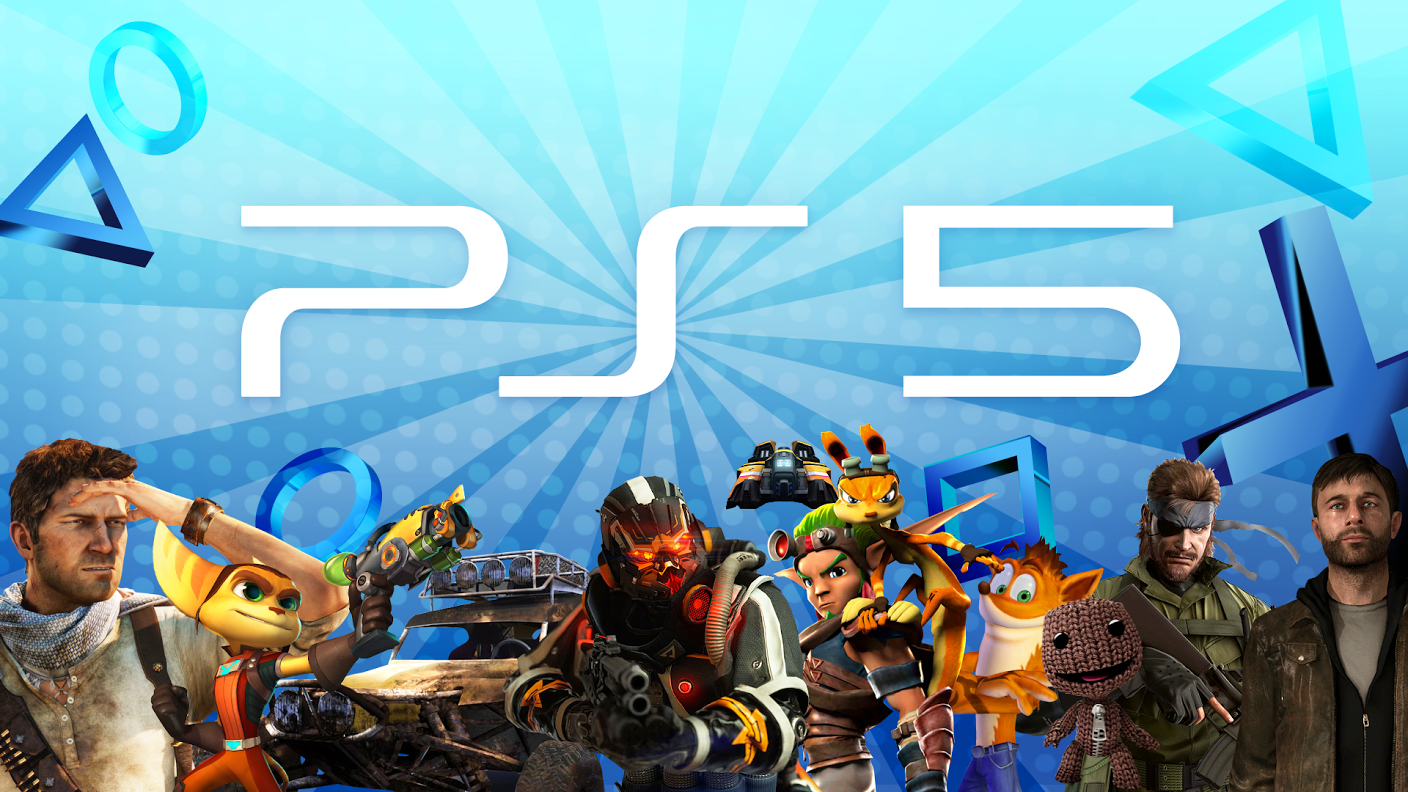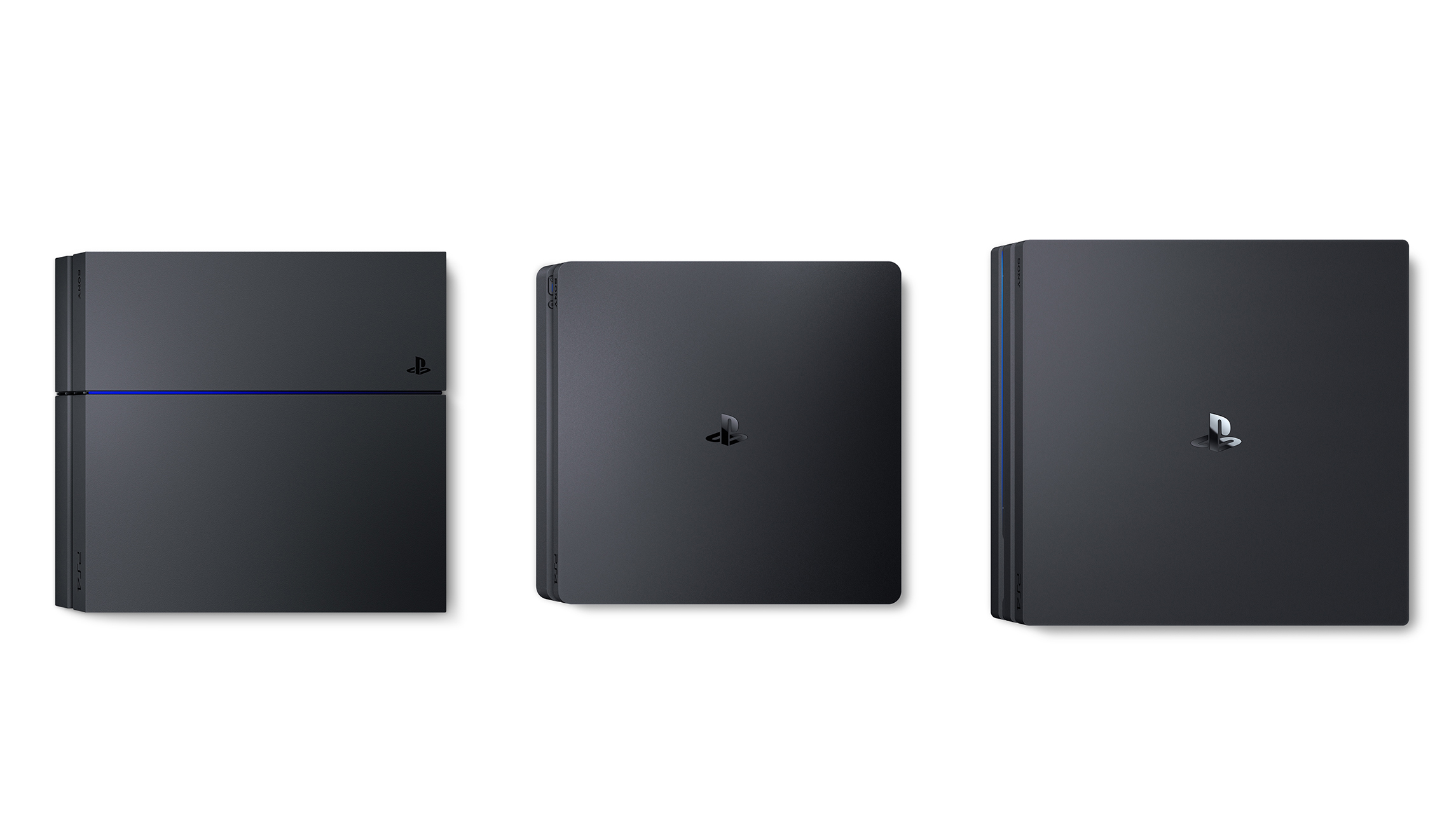
PS5 is an illusive beast – one that’s just as likely to be announced next year at E3 as it is to never see the light of day.
That being said, peering into our crystal ball in order to gain an insight into what we can expect from a PlayStation 5 may sound like an odd exercise given that Sony has just launched its first mid-cycle console variant in the form of the PS4 Pro and countless pundits are predicting the imminent demise of the old console lifecycle model as we know it.
However, now we’ve had a chance to get to know the PS4 Pro, and concluded that it feels very much a stopgap fuelled by quicker-than-expected uptake of 4K TVs, we would argue that it’s the perfect time to turn our thoughts to Sony’s next console.
When Shuhei Yoshida, president of Sony’s Worldwide Studios, was asked about the PS5, he responded that he thought the PS5 was a question of ‘if’ rather than ‘when’
Microsoft may be about to throw a spanner into the works of the console arms-race with its Project Scorpio (due in late 2017), but there are good reasons to believe that Sony is less comfortable with the idea of taking a mobile phone-style “upgrade every year” approach to consoles in the future. Not the least of which is economics: it’s well documented that the longer a console can persist on the high-street shelves, the more profitable it becomes, as economies of scale reduce manufacturing costs, while a large installed base means publishers can sell more copies of their latest games.
But helter-skelter change is the hallmark of these times, so we shouldn’t assume a PlayStation 5 will necessarily take a similar form to its predecessors. And Sony is definitely prepared to think radically – when Shuhei Yoshida, president of Sony’s Worldwide Studios, was asked about the PS5 by Oddworld developer Lorne Lanning, he responded that he thought the PS5 was a question of ‘if’ rather than ‘when’.
What we can do, though, is detail what we, and all keen gamers, would like to see in a PlayStation 5.
We’ve got the TVs: can we have proper 4K gaming?
The PS4 Pro offers a tantalising hint of what 4K gaming could be like. But the stark fact remains: it still doesn’t have the grunt to do 4K properly.
Its “checkerboard” technique of taking single pixels and using each to render four pixels in 4K resolution is clever, but now 4K TV sales are gaining traction, it’s reasonable to expect console technology to advance to a level at which it can display 4K output natively.
Chris Kingsley, CTO and co-founder of developer Rebellion, dangles an even more ambitious technological carrot in front of a putative PS5: “Obviously new hardware should be able to support 4K TVs and possibly even 8K TVs at a push!”
Native 4K support, surely, will be a basic requirement of the PlayStation 5? And if Sony cracks that particular problem with alacrity, it could even mean that a PlayStation 5 will arrive sooner than anticipated.
The VR effect
Sony recently became the first console manufacturer to embrace virtual reality, thanks to the PlayStation VR, but if you examine PlayStation VR closely – and observe how it operates on the PS4 Pro – it invites speculation about how a PS5 might take VR to a new level.
Currently, PlayStation VR operates at lower resolution than the Oculus Rift and HTC Vive – but, as it stands, even its current incarnation almost pushes the base PlayStation 4 beyond its limits. Running a PlayStation VR on a PS4 Pro brings improved frame-rates, which are very handy indeed in terms of the overall VR experience, but even the PS4 Pro can’t overcome the resolution constraints set by the PlayStation VR headset.
Sony will want to return to the market with a second, markedly higher-tech iteration of PlayStation VR
So it’s a good bet that, presuming PlayStation VR is successful (and it already appears to be catching on) Sony will want to return to the market with a second, markedly higher-tech iteration: which would provide an obvious selling point for the PlayStation 5.
And if a PlayStation VR 2 headset could be sold without an external black box, it should be markedly cheaper, further accelerating VR’s march into the mainstream.

Rebellion’s Kingsley makes another good point about second-generation VR. “Anything that reduces the leads has to be a good thing,” he says.
The umbilical cord which currently attaches VR headset-wearers to their consoles or PCs obviously goes against VR’s entire immersive nature, and we’re already beginning to see, for example, a third-party implementation for the HTC Vive that renders it wireless. It’s a safe bet that the capacity for running a wireless PlayStation VR 2 will be built into the PS5.
But Kingsley’s PlayStation VR 2 wish-list goes further: “Wide vertical and horizontal field-of-view would be top of my list, and of course, that would require 4K resolution per eye, and high dynamic range would be great too.”
HDR and wider fields of view should be achievable but sadly, we don’t reckon full 4K VR is likely to be a possibility even for the PS5. As Kingsley points out, that would require 4K rendering per eye, which equates to 8K rendering overall, which we expect to be beyond the PS5’s capabilities.
That said, perhaps Sony will find some clever technological bodge to get around that before it releases its fifth PlayStation console.

What form will the PS5 take?
It has been suggested that future consoles could take radically different forms to current ones, thanks to advances in cloud computing bringing about the ability to stream games, thereby doing away with the components that make consoles so bulky. But we don’t reckon Sony will take a more Nintendo-like approach and put the PS5 in a tiny box.
One reason for that is that with the PS4, Sony has only just committed to using what are basically the innards of a PC – the first three PlayStation variants used proprietary components which, in the PS3, were so esoteric that the console flopped. Developers, certainly, are massively relieved that the PS4 took the PC route.
“We always want fast CPUs and GPUs, but lots of fast RAM is also very important – it’s no use having fast processors if they are starved of data.”
Chris Kingsley
“Developers want the ability to make the best games using the minimum amount of effort. We want to focus on being creative and getting things to just work,” Kingsley says. “So the hardware should be based around current console hardware, which is in turn based on PC hardware. We always want fast CPUs and GPUs, but lots of fast RAM is also very important – it’s no use having fast processors if they are starved of data.”
All the above are achievable, but will the PS5 still have a hard disk?
Sony Computer Entertainment President and CEO Andrew House spoke at the PS4’s launch about how deciding to put hard disks and 8Gb of RAM in the PS4 were both “Billion-dollar decisions”. Yet any PS4 owner will tell you that the aspect of the console they hate most is its wilful inability (unlike the Xbox One variants) to accommodate external USB hard disks.
Given that 4K games by definition contain much more data than 1080p ones, that issue will become exacerbated if a native 4K PS5 arrives. Any PS4 owner would put support for external USB hard disks top of their wish-list for the PS5, but given that Sony (inexplicably) declined to let the PS4 Pro support them, we aren’t hopeful of that.

Streaming games
Of course, if games were just streamed to the PS5 that problem would disappear entirely, and Sony already has a game-streaming service in the form of PlayStation Now.
So why isn’t this more of a definite feature rather than something on our wishlist? Well, Sony is remaining tight-lipped about PlayStation Now uptake figures, but we suspect they are pretty unimpressive. It has certainly had issues with setting the right subscription charges, given that PlayStation Now effectively gives backwards compatibility – a “luxury” that was previously free for owners of PlayStation 2s and 3s.
There would be nothing to stop Sony launching a small form-factor cloud-based version of the console for those with mega-fast broadband
But the biggest issue is broadband speeds. Even 4K TV requires a minimum of 25Mbps broadband in order to provide satisfactory streaming, and it’s doubtful whether 4K game streaming – with extra information on top of the visual side – would even work reliably at such speeds. There would be nothing to stop Sony launching a small form-factor cloud-based version of the console for those with mega-fast broadband, perhaps with a mobile phone-style subscription model that has an upfront hardware costs.
But for the PS5 to sell anything like its predecessors, there would have to be a conventional version with similar innards to the PS4.
In his recent autumn statement, chancellor Philip Hammond announced an infrastructure investment aimed at bringing fast broadband and 5G mobile data to the UK. But the earliest that would have an impact would be 2021, and the PS5 will almost certainly arrive before then. Perhaps its first mid-cycle update, though, will be a streaming version which takes advantage of burgeoning 5G networks?

Optical discs or not?
The rise of download games, which continue to eat into the physical disc market, means that pundits have been predicting that consoles will go discless for about a decade now. However, our guess is that the PS5 won’t be the first system to risk venturing down that road, at least not until it catches wind of Microsoft doing the same thing.
Sony has taken a lot of (justifiable) flak for not putting a 4K Blu-ray drive in the PS4 Pro – making it a less attractive purchase for film and TV buffs than the Xbox One S.
Surveys continue to show that gamers are still attached to the possibility of buying games on physical discs – not least because they can then sell them (a practice that the games industry hates), and due to their persistent hard disk space issues, although it’s only the current generation of consoles which has insisted on installing entire contents of Blu-ray discs onto hard disks.
If Sony were to axe the Blu-ray drive from the PS5, gamers would expect several terabytes of storage in compensation.
Kingsley gives a developer’s view on the topic: “I think the days of delivering films and games via disc are on the decline, as most people are going digital; however, some people like physical discs, so who knows whether that decline will level out and remain present but at a lower level than now?”

Upgradable or not?
Microsoft has revealed its biggest weapon in its crusade to consign the console cycle to oblivion. Project Scorpio, due at the end of 2017, will include some form of upgradability. Which, bearing in mind how little we know about the console at this juncture, may be required in order for Project Scorpio to run games in full native 4K, or could perhaps pave the way for it to run HD or 4K VR games in future.
It would be easy for Sony to take such a route with the PS5, since it will share PC architecture with Microsoft’s consoles. But even for Microsoft, with its PC legacy, an upgradable console is quite a punt: the components which would be the most likely candidates for upgrades, the CPU and GPU, would themselves come in at roughly the cost of an entire new console, and telling gamers that can only run certain games in all their finery if they upgrade their consoles is a very alienating ploy.
Sony is much more comfortable with the concept of console cycles, which means it is less likely to add upgradability to the list of the PS5’s attributes. But, that said, it will closely watch what Microsoft does with Project Scorpio.

So when can we expect the PS5?
Given that the PlayStation 4 was launched in 2013 and Sony’s previous consoles arrived in six-year intervals, it would be easy to project that it will launch the PlayStation 5 in 2019. The sort of technology available then should easily allow full native 4K games without saddling the PS5 with a massive price-tag and, by 2019, 4K TVs will be the norm, rather than the exception, in the average household.
2020 might be the year in which Sony unleashes the PS5 on the world, as the first native 4K console with wireless VR … as long as Microsoft doesn’t get there first
So it would be a surprise if Sony doesn’t want to capitalise on that at the earliest possible juncture. However, Kingsley points at the PS4 Pro, and reckons that could have an effect on the length of the current console cycle: “It’s a difficult one to judge, but overall I think it’s fair to say that the overall cycle will lengthen slightly.”
Especially if the PS4 Pro wildly outsells the base PS4, which admittedly isn’t something we anticipate happening once it has reached a critical mass of households with 4K TVs.
So perhaps 2020 might be the year in which Sony unleashes the PS5 on the world, as the first native 4K console with wireless VR … as long as Microsoft doesn’t get there first.
Source: techradar.com










































Love to know how they think they are going to do that with a broadband service that maxes out 76mb if you somehow have a perfect connection and not many other people using it nearby. 99% of the population will simply not have the bandwidth to be able to stream 4k content because this country's broadband speeds are still in the dark ages. There are third world countries with faster average broadband speeds. The only provider in the UK that even gets remotely close to decent speeds is Virgin, and even then you get an upload speed that barely rivals a baked bean can and some string, it would at least allow 4k streaming, again assuming you aren't in a congested area or on a package that restricts your data usage to 3 emails and a low rest photo per month.